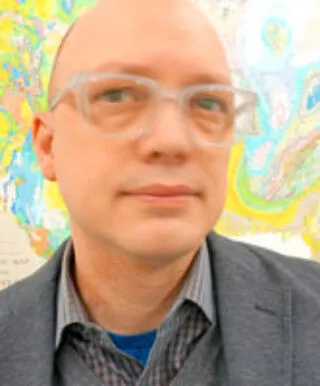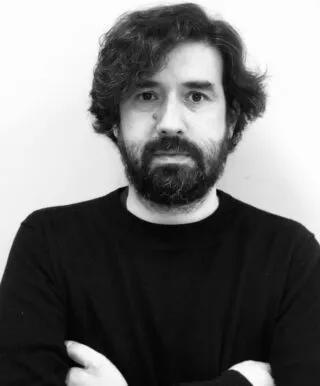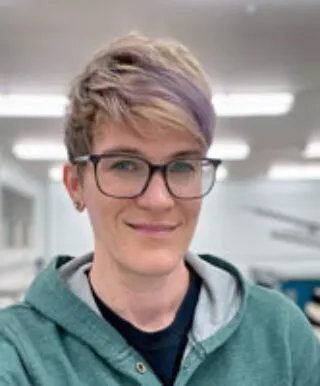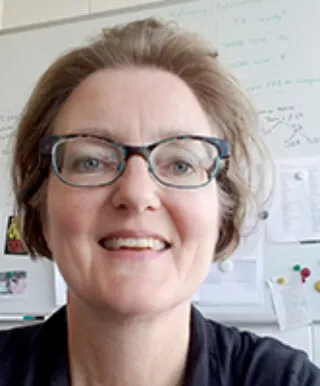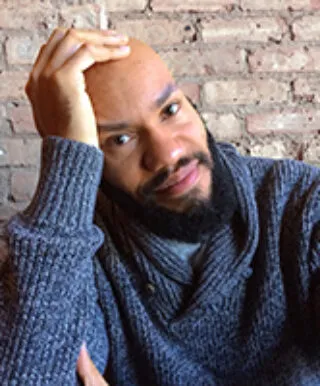
Katherine Hair’s “Turtle Derby; You Can’t Go Home Again” (wax, chalk, soil. 2022).
Join Us
Program Overview
The MFA in Studio Art at the University of Illinois Urbana-Champaign is a three-year, fully-funded graduate program that fosters deep, critical engagement with contemporary art and its contexts. Our program is ideal for artists from a wide range of creative, academic, and professional backgrounds, including those working across disciplines or returning to deepen their practice.
We emphasize rigor and experimentation, collaboration and independence. Our community of artists, scholars, and makers supports work that is materially fluent, intellectually ambitious, socially conscious, and globally aware.
Students pursue advanced studio research in Painting, Sculpture, New Media, Photography, or Printmaking, or forge their own interdisciplinary paths with mentorship across areas.
Whether you’re questioning the cultural logic of the image, reshaping craft traditions, exploring identity through technology, or using performance to resist dominant narratives, you’ll find space here to challenge conventions and develop a practice that matters.
What Sets Us Apart
- Cross-disciplinary access to a major research university
- Fully funded through assistantships, fellowships, and competitive grants
- Private studio space + 24-hour access to state-of-the-art facilities
- Active, practicing faculty with international reputations
- Collaborative, critique-driven culture with space for risk and rigor
- A thriving local art community with proximity to Chicago, Indianapolis, and St. Louis
- Focus on teaching experience for students interested in academic careers
A Community of Research + Practice
Art at Illinois is a space of critical inquiry. MFA students take part in vibrant, ongoing conversations around aesthetics, politics, materiality, identity, systems, and power. We embrace making as a way of knowing and we welcome diverse ways of thinking, living, and creating.
You’ll develop a substantial body of work in close dialogue with peers and faculty across disciplines. Through critiques, studio visits, reading groups, and seminars, students are encouraged to sharpen their voice, refine their questions, and expand the reach of their work.
Our flexible curriculum supports a wide range of material and conceptual approaches. Students regularly collaborate with faculty and researchers across campus in areas such as:
- Gender & Women’s Studies
- Disability Studies
- Political Ecology
- Data and Algorithmic Cultures
- Critical Race Theory
- Performance and Public Art
- Dance, Design, Theatre, Media, and more
Faculty Mentors
Our MFA faculty are active artists, writers, and researchers exhibiting nationally and internationally. Their practices reflect a broad array of disciplines and urgencies:
Conrad Bakker
painting, sculpture, alternative economies of art production and distribution, thing theory
Cristobal Bianchi
Public space, experimental poetry, poetics of the sky, cultural trauma, psychoanalysis, birds, participation, performance, art and social change
Rachel Fein-Smolinski
Health humanities, medical archives, science fiction, disability activism, pain, addiction, gender and sexuality, queer phenomenology, body horror, interdisciplinary photo and installation
Ryan Griffis
experimental geography, political ecology, research-based practices, collaboration & collective forms of making, documentary media
Ben Grosser
software, networks, social media, surveillance, computer vision, computational agency
Kevin Hamilton
interactive media, telepresence, research methodologies, history of technology
Patrick Earl Hammie
painting, portraiture, illustration, body in visual culture, narrative, gender, race, identity
Laurie Hogin
painting, neuroscience, landscape and ideology, color, desire, materialism, narrative
Emmy Lingscheit
printmaking, post-natural world, systems
Guen Montgomery
objects, materiality, the everyday, gender and identity
Melissa Pokorny
sculpture, landscape and memory, collecting, nature/culture, magic
Dr. Sharath Chandra Ramakrishnan
the design of cognitive media interfaces, multimodal cues, auditory and haptic interfaces, a socio-technical design approach, assistive hearing technologies, hearing disability and speech perception, human-machine interaction design in virtual environments, cognitive psychology, auditory cognition, sound studies and the media arts.
Stacey Robinson
graphic design, illustration, graphic novels, speculative futures
Joel Ross
photography, sculpture. text/image, nationalism, identity, legality, narrative
Stephen Signa-Aviles
sculpture, bricolage, material studies, decolonization, myths & rumors, labor history and migration, sports and music culture
Chiara Vincenzi
sustainable and ethical fashion practices, textile art
Deke Weaver
performance, animality, myth, ecology, storytelling
Brooke White
The convergence of place, memory, and time; experimental photographic techniques, documentary, portraiture, video; topics related to family and loss, identity, nature, and motherhood.
Facilities & Resources
Every MFA student receives an individual studio and 24/7 access to a range of facilities:
- Installation and critique spaces
- Ceramics, wood, metal, and plaster shops
- Digital fabrication tools (3D printers, CNC, laser cutters)
- Fully equipped digital media labs
- Extensive equipment checkout system
- Krannert Art Museum and its archives
- Ricker Library of Architecture and Art
Funding & Teaching Opportunities
Nearly all MFA students are fully funded through Graduate Assistantships, fellowships, and awards.
Assistantships are 9-month appointments (10 hrs/week), which include:
- Full tuition waiver
- Partial fee waiver
- Monthly stipend
- Real teaching experience as Instructor of Record or in instructional support roles
Additional funding is available through competitive internal and campus-wide fellowships and travel/research grants.
What Comes After
Our graduates shape the future of art, culture, and critical discourse. Alumni go on to:
- Exhibit work nationally and internationally
- Teach at universities and colleges
- Work as curators, writers, activists, designers, and independent artists
- Create public and socially engaged art
- Launch collectives, publications, residencies, and cultural platforms
We prepare artists to thrive in a world that is constantly shifting, and to help shape what comes next.
Requirements
- Online application via [Slate portal or application link]
- Portfolio of recent work
- Statement of purpose
- CV/resume
- Three letters of recommendation
- Transcripts (unofficial initially)
- Optional: Writing samples or research materials
For detailed instructions, visit our Graduate Admissions page or contact the Studio Art MFA Graduate Coordinators.
Apply
The MFA in Studio Art at Illinois is a space for deep inquiry, bold making, and artistic evolution. We welcome artists who are ready to take risks, ask big questions, and contribute to a shared creative culture rooted in critical thought, care, and imagination.
Let your work grow in a place that sees art as both a personal and political act—a way of shaping not just images, but ideas, communities, and futures.
We admit new students each fall.
Application Deadline:
January 15, 2025 (for Fall 2025 entry)
